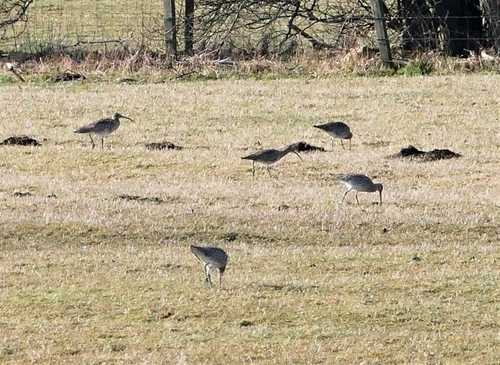 In the past, many believed that the curlew’s haunting cry lamented the souls of lost sailors. Sad, then, to reflect that without concerted effort to save the curlew, we may soon mourn its loss to many parts of Scotland.
In the past, many believed that the curlew’s haunting cry lamented the souls of lost sailors. Sad, then, to reflect that without concerted effort to save the curlew, we may soon mourn its loss to many parts of Scotland.
They have declined across Scotland by 61% (1995 to 2016), twice the rate in England. This is particularly worrying, as Scotland holds around 60% of the UK population. Something clearly needs to be done to help them.
The main cause of decline is loss of quality habitat, largely stemming from agricultural intensification, but there is also significant evidence of increasing predation of nests and chicks. It is perhaps no surprise, therefore, that managed heather uplands have become key refugia for curlew, where they find suitable terrain and consistent predator control.
We need to see how we can extend the boundaries of beneficial habitat management and predator control back down onto farmland where curlews used to breed in good numbers.
The GWCT is getting to grips with these issues on its demonstration farm at Auchnerran in Aberdeenshire, which holds significant populations of curlew, lapwing and oystercatchers during the spring and early summer months. This gives the Trust an opportunity to study the productivity and movements of these wading birds through a range of tagging, nest camera monitoring and other approaches.
 Curlew at Auchnerran (Picture credit: Elizabeth Ogilvie)
Curlew at Auchnerran (Picture credit: Elizabeth Ogilvie)
The factor that is increasingly found to be limiting productivity is predation. The bulk of this is due to foxes and crows. Scotland needs to find an appropriate balance of productive farming, habitat management for environmental benefits, and predator control. With a shift of farming support from 2025 to build in payment for environmental outcomes, this will be vital. Achieving good habitat condition counts for little if we cannot also maintain the species we should expect to see on the land.
If we are to achieve a significant recovery of curlew across Scotland, predator management will often provide the most immediate response. Habitat management can take much longer to yield results and may be particularly challenging if not deployed in conjunction with predator control. The concept of adaptive management, where trials and monitoring can support a wide range of cases such as the recovery of a threatened species or constraining the impact of an overabundant species, is well established around the world.
World Curlew Day is a grassroots initiative, supported by major environmental organisations, to raise awareness of the plight of curlew and to encourage activities to help them. We make no apology for repeating that we cannot simply preside over extinction. We must take the opportunity to assess all practical options at our disposal to safeguard the future of our curlew.